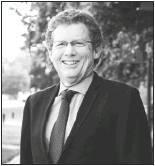The EP Pumping Permit Request
Former BSEACD Board President
The Barton Springs Edwards Aquifer District (BSEACD) was created by the Texas Legislature and overwhelmingly approved by the district’s voters in 1987. For more than 30 years, the district’s elected board of directors and its professional staff have fulfilled their mission: conserving, preserving, protecting and recharging groundwater. In doing so, the BSEACD has worked to promote efficiency, prevent waste, and protect our natural resources and property owners.
During the late 1980’s and early 1990’s, my family and I lived in the Buda area. We worked with volunteers and local cities to create the BSEACD. I was elected to the very first BSEACD Board of Directors and served for eight years, seven of those as Board President. At the conclusion of my term in 1996, our family moved back to Wimberley. Since then, I have been continuously involved in groundwater, conservation and natural resource issues in our area.
In 2014, when the Electro Purification Corporation (EP) planned to pump massive amounts of water from the unregulated portion of the Trinity Aquifer in central Hays County, many area residents worked with the BSEACD to bring this region of the county under regulatory oversight. We were successful in the 2015 legislative session and the BSEACD received authorization to expand its jurisdiction. Their added tasks are to protect groundwater resources, manage pumping and coordinate conservation over the Trinity Management Zones - the Upper, Middle and Lower Trinity Aquifer, that underlie the Edwards Aquifer.
Today, we are again involved in the latest contest with EP and their alarming plan to withdraw millions of gallons of essential groundwater and sell it outside of this region. In February 2018, the BSEACD published the “Evaluation of the Potential for Unreasonable Impacts from the EP Well Field, Hays County, Texas.” These findings along with the district’s information and staff recommendations will be presented at the public information session at the Wimberley Community Center on Monday, June 18 at 6 p.m.
The BSEACD Board will make the final decision on the EP permit. As we proceed through the informational hearing and public comment process, we should focus on these concerns -Based on the pumping tests and the modeling in the BSEACD “Evaluation” study, the proposed EP wells will significantly decrease the yield or literally end pumping of many existing wells due to lower groundwater levels. According to the study, these conditions are “almost certain” unless “special permit conditions” are applied. How could any special conditions justify this permit?
According to the BSEACD “Evaluation” report, the proposed EP pumpage will have a dramatic impact on existing water wells, especially the many older, shallower wells. Existing wells within 2 miles and potentially those beyond this range will see reduced water levels by 200 feet and possibly 500 feet combined with the likelihood of lower water quality. If this is the case, what is the impact on wells that are immediately outside of the 2-mile line and how far do the negative effects extend to these additional wells?
If allowed, the EP permit would leave existing well owners in the 2-mile area with an insufficient volume of water. By its own rules, the district has the duty to protect property owners and conserve our groundwater. How will existing well owners be protected?
EP must demonstrate the actual need and justify the volume the company wants to pump and ship out of this area. If a permit is obtained from BSEACD for any significant volume, how will existing well owners receive meaningful mitigation for the loss of their water?
If the BSEACD approves a permit of any volume for EP, how is that going to be efficiently monitored? What will happen under drought conditions or other serious threats to this area of the aquifer?
The BSEACD needs to be mindful to avoid “waste” of groundwater resources as defined by the Texas Water Code and district rules. Withdrawl of groundwater of this magnitude results in lower quality and potentially unsuitable water. Does this requested pumpage meet the definition of waste and the test of efficient and beneficial use of our groundwater?
These issues and many others raise serious questions on the EP permit. Based on the evidence and using plain common sense, this permit request is objectionable and sets a dangerous precedent. Ultimately, even with a revised and scaled down pumpage permit, the BSEACD Board of Directors should deny the EP filing based on their sworn duty to protect our groundwater for all property owners of this area.
Patrick Cox, Ph.D., is a longtime Hays County resident who resides near Wimberley within the 2-mile radius of the EP production wells. He was a board member and President of the Barton Springs Edwards Aquifer Conservation District (1988-1996).


